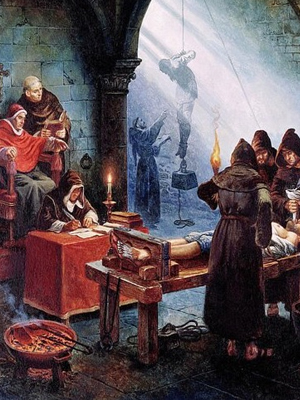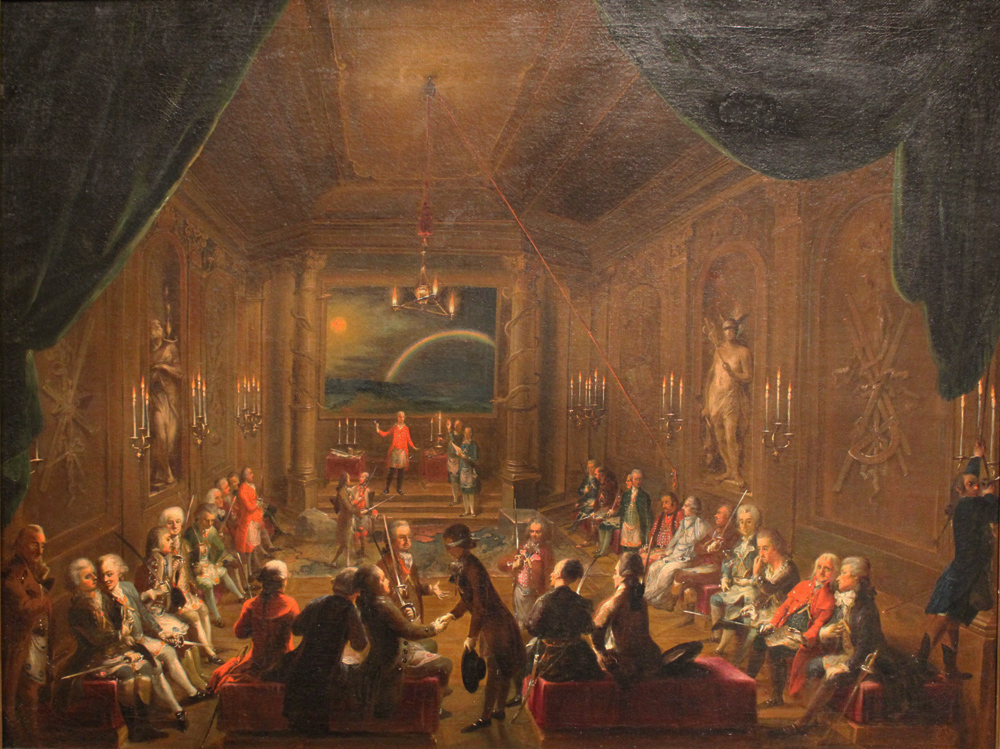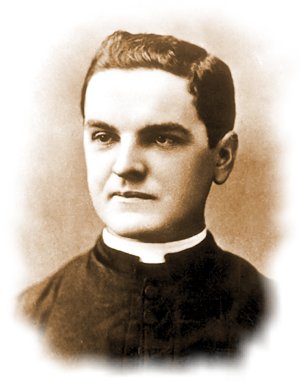
Masonic Stories
The conflict between Catholicism and Freemasonry
Why did the Church have such an antagonistic view towards Freemasonry?
For nearly three hundred years, the Catholic Church has held an openly hostile view towards Freemasonry. Many Popes and Cardinals have banned, persecuted, and railed against Freemasonry, with a series of official decrees from the Vatican condemning the Craft.
The start of Catholicism’s tense relationship with Freemasonry occurred in the early 1730s, just a few decades after the formation of the Premier Grand Lodge of England in 1717, which launched Freemasonry onto the world stage. The fire of free thought and religious liberty that was proclaimed by Freemasons spread across Europe at an astonishing pace.

When the first Italian Lodge appeared in Florence in 1731, the Catholic Church began an investigation into its activities. Though the Lodge was formed by an Englishman, it admitted Italian members. Such was the case with Brother Tommaso Crudeli, poet, lawyer and member of the Lodge, who was seized by the Inquisition and after a year of vicious torture and degrading conditions was finally released. He died a few years later, his health ruined by the interrogation, a victim of Church oppression.
This incident was the direct result of the Papal Bull of Clement XII, In Eminenti Apostolatus, in English “A Warning to the Apostles” that was written in 1738. In it, he declared Freemasonry a criminal organization and said, “We consider it our duty to watch day and night, as a faithful servant of the household of the Lord, lest such men do not break into the house like thieves, and like foxes seek to destroy the vineyard, thereby perverting the hearts of the simple and piercing them with their poisoned arrows.”
This Bull would be referenced again and again over the next century and a half, being echoed in Papal Bulls, encyclicals, and eventually enshrined in Canon law. Pope Clement XII declared that any Catholic who became a Freemason would be immediately excommunicated. This visceral reaction to the establishment of free thought in Italy was obviously the response of a powerful institution watching its hold on the world disintegrate. It could not tolerate any challenge to its spiritual authority by any group that met in secret and discussed philosophy, science and humanism.
In 1751, Pope Benedictus XIV went one step further in issuing an Apostolic Constitution, Providas Romanorum, once again condemning Freemasonry. The Constitution added the charge that Freemasonry, by accepting initiates of different faiths, promoted heresy, and also, by declaring the truth of Natural Law as superior to Church decree, undermined the moral fabric of society.
In the face of these threats and the risk of excommunication, Freemasons continued to welcome Catholic initiates who joined despite harsh coercion from their Church leaders. A full-blown conflict between the Church and Freemasonry began, with the Italian and Spanish Inquisitions dispatched to root out Lodges and condemn Freemasons as heretics.

Despite the efforts of the Vatican, the Masonic Rites of Continental Freemasonry began to thrive in opposition to the tyranny of the Catholic Church, with the establishment of the higher degrees in the 18th Century. It is believed by some that these higher degrees, and their connection to the Knights Templar, were formed specifically to promote anti-Papal sentiment. This belief stems from Masonry’s conviction that every human being is connected directly to their Creator and that no Pope or Pope-like figure is necessary as an intermediary between humanity and God.
In 1821, Pope Pius VII promulgated the Papal Bull, Ecclesiam a Jesu Cristo, which stated that all Freemasons that could be discovered within the Church must be excommunicated for fear of plotting conspiracies against Church and State. It also linked Freemasonry with the Carbonari, an anti-clerical revolutionary movement, fighting to unite the kingdoms of Italy into one nation, free of Catholic control. Though many Freemasons were Carbonari and the society was modeled after Freemasonry it was not a Masonic organization – though both held the common goal of liberty.
The efforts of Pius VII only fueled the expansion of Freemasonry and other fraternal societies across Europe. In fact, the latter decades of the 19th Century have been called the Golden Age of Fraternalism. In response to this, Pope Leo XII issued Papal Encyclical, Humanum Genus, in 1884, which was addressed again, and in stronger terms than ever before, the Catholic case against Freemasonry.
“Then come their doctrines of politics, in which the naturalists lay down that all men have the same right, and are in every respect of equal and like condition; that each one is naturally free; that no one has the right to command another; that it is an act of violence to require men to obey any authority other than that which is obtained from themselves.”
Indeed, Freemasonry is guilty of the charge of believing each human being is a sovereign unto themselves and deserving of personal liberty. Government exists to serve the people not to rule over them from golden thrones. Humanum Genus goes on to claim:
“But the Naturalists and Freemasons, having no faith in those things which we have learned by the revelation of God, deny that our first parents sinned, and consequently think that free will is not at all weakened and inclined to evil. On the contrary, exaggerating rather the power and the excellence of Nature, and placing therein alone the principle and rule of justice.”
Again, Freemasonry was guilty as charged. The Craft does recognize the sacred power of Nature and believes that humanity is capable of its own salvation through the good works of merit and ability. That the Great Architect of the Universe has established the Tracing Board of Nature to educate all human beings that have eyes to see and ears to hear.

The other reactionary response of the Catholic Church to the rising tide of Fraternalism was the formation of the Knights of Columbus in 1882. It was initially created to provide a mutual support system for newly arrived Catholic immigrants in the United States and now promotes a conservative Catholic stance on social issues such as same-sex marriage and abortion. Utilizing ritual, and separated into degrees, it copied the Masonic system, while avoiding naturalism, secrecy and other sins which the Church saw, and condemned in the Craft.
In 1917, when the Catholic Church issued the first official comprehensive codification of Latin canon law, the Anti-Masonic attitude would be preserved as law and the additional step was taken to ban all books and other writings which the Church deemed to be supportive of Freemasonry. This law would remain on the books for decades, but with the dawning of the 1960s and declining membership, rumors began to spread that the Church would relax its attitude towards the Craft.
In 1983, the Code of Canon law was changed and all direct references to Freemasonry were removed. The Code now read:
“A person who joins an association which plots against the Church is to be punished with a just penalty, one who promotes or takes office in such an association is to be punished with an interdict.”
This led many Catholics to become Freemasons as canon law no longer specified Freemasonry as a subversive organization. However, in 1983 the Sacred Congregation for the Doctrine of the Faith, headed by Cardinal Joseph Ratzinger and with the personal approval of Pope John Paul II, declared: “The faithful, who enroll in masonic associations are in a state of grave sin and may not receive holy communion.” This further deepened the confusion among Catholics as to the stance of the Church on Freemasonry.
As a result, Catholic membership in Freemasonry increased, even though many Bishops and high-ranking Catholic officials remained against Masonry whole-heartedly, with many calling Freemasonry a “naturalistic” or even pagan religion. Throughout the centuries of conflict with the Church, Freemasonry has never officially barred Catholics from joining the ranks of the Craft. Instead, Freemasonry admits members regardless of religion, creed or custom.
How stands the relationship of the Church and the Craft today? While many Catholics are Freemasons, the Church leadership continues to maintain that Freemasonry is incompatible with doctrines and dogma of the Catholic faith.
As the Church’s influence over world politics has diminished, this loss of control has softened their opposition to Freemasonry. Initially, Catholicism’s hostility towards the Craft was based on the fear of the rising tide of freedom of speech, secular education, alternative philosophies, and religious tolerance that swept across Europe in the 18th and 19th Century.
Now that these are all accepted values by many Catholics, and the world at large, perhaps it is time for the Catholic Church to officially recognize that Freemasonry is not the enemy of the Church but a friend, whose values inspire civilization and progress and that its rituals and symbolism reinforce the personal faith of each of its initiates.
